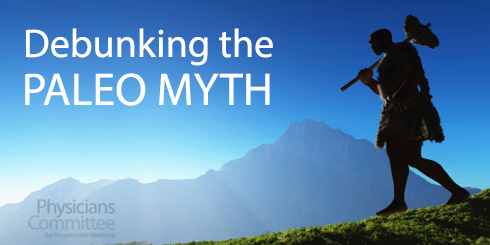Debunking the Paleo Myth

Christina Warinner, Ph.D., co-director of the laboratories of molecular anthropology and microbiome research and assistant professor of anthropology at the University of Oklahoma, will debunk the Paleo diet at the Physicians Committee’s International Conference on Nutrition in Medicine on July 29-30, 2016, in Washington, D.C.
Christina Warinner, Ph.D., co-director of the laboratories of molecular anthropology and microbiome research and assistant professor of anthropology at the University of Oklahoma, will debunk the Paleo diet at the Physicians Committee’s International Conference on Nutrition in Medicine on July 29-30, 2016, in Washington, D.C.
Below, Dr. Warinner answers a few questions she’ll address in depth at the conference.
Paleolithic peoples are sometimes depicted as tireless hunters who consumed large quantities of meat. Is that accurate?
You might be surprised to learn that the clearest examples of recent dietary adaptations in humans are for starch-rich plants. Rather than our hunting habits, the thing that appears to set humans most apart from our primate relatives is our evolved dependence on cooking. Perhaps the most interesting thing about our dietary evolution is that we are effectively “cookivores.”
Modern “Paleo” diets eschew whole grains or legumes. Is there any evidence showing that Paleolithic peoples did eat these foods?
Plant microfossils from the barley family have been found on the teeth of Neanderthals, and starches from grains and tubers have been found on Paleolithic grinding stones that predate agriculture by more than 10,000 years. Humans did not discover these foods during the Neolithic—they had already been eating them, albeit in smaller quantities, for a long time.
How different are the foods we eat today from what Paleolithic peoples ate?
Do not be fooled by the advertisements—there were no Paleo protein bars or flourless chocolate cakes in the Paleolithic. And if you could magically transport yourself back in time, you would hardly recognize the ancestors of today’s lettuce, carrots, avocados, bananas, and apricots. Real Paleolithic foods are a far cry from what we may imagine, but that makes them all the more interesting.





